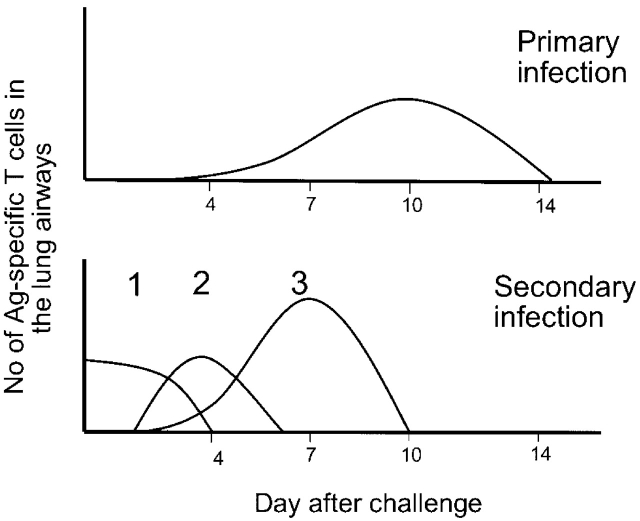Figure 2.
T-cell response in the lung airways occurs in distinct phases. T cells responding to a primary respiratory virus infection begin to accumulate in the lung airways around Day 6 after infection and peak numbers are typically present on Day 10 after infection. T cells responding to a secondary respiratory virus infection are comprised of three distinct phases. The first phase involves memory T cells that are already in the lung airways. These cells respond immediately to the infection and their numbers decline rapidly. The second phase involves memory T cells that are rapidly recruited into the lung airways at early stages of the infection (Days 3–6). These cells are nonproliferating. The third phase involves memory T cells that have proliferated in response to antigen and are then recruited into the airways (peaking at Day 7). Taken together, the secondary response is characterized by a sustained T cell response to the infection. In addition, the accumulation of proliferating cells in the lung airways (phase 3 cells) occurs earlier, and is of greater magnitude, than in the primary response.

